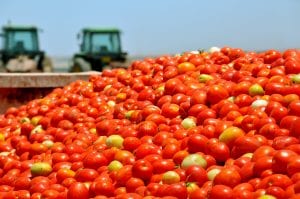VP of Environmental Science and Resources at Braga Fresh, Eric Morgan said their cover cropping system in tomatoes is showing promise. The approach has resulted in a sizable decrease in the amount of labor and materials required for cultivation. Morgan said that groundwork going from one crop to the next can involve as many as 35 passes through the field. The low tillage, cover cropping plan they adopted reduced that number to about nine. “The goal was instead of the extensive tractor-based tillage operations, we would let the roots be our tillage and we were actually right,” Morgan noted.
After the tomato crop was finished, minimum tillage was performed, and a Merced rye cover crop was planted. Morgan said after the first set of rains quit in January, they went in and terminated the cover crop and let it sit. A few months later they made a couple of lighter tillage passes before using a mulcher and applying herbicides.
With a 500-acre operation, Morgan believes they saved a sizable amount of money with the approach. “That Fall tillage is probably $1,000 an acre. It could be more; it could be less. It kind of depends on what you’re doing. But I figure we saved about $1,000 an acre. So we saved $500,000 by doing it this way,” Morgan noted.
The cover cropping approach is also demonstrating secondary benefits as well. A standard tillage system would have required pre-irrigation at some point in the process. Morgan said moisture from the rain was held in the bed longer than usual with their cover crop approach, saving water. Even after the cover crop had been terminated, Morgan said the roots were still down in the soil as far as eight feet.
“I think that growers largely conduct tillage operation to facilitate drainage and to facilitate aeration. The drainage moves your salts and everything else. And my contention right now is that roots do it better,” Morgan explained. “They drain it better, they open it up better, they open it up deeper, and they do it for less money.”

Brian German
Ag News Director / AgNet West











